In occasion of Pitti Uomo 107, Polimoda presents AN/ARCHIVE EVENT TWO: blue r/evolution, an unprecedented exhibition that transcends traditional fashion discourse and explores the evolution of blue, denim and its connection to work, identity, crisis, and revolution.
AN/ARCHIVE is an innovative space for fashion research presented by Polimoda that hosts exhibitions, workshops, conferences and debates on some of the most relevant issues for today’s fashion industry, stimulating reflection on the future of the sector and helping a new generation of researchers to emerge. It is a space open to the city, designed to welcome researchers, curators, archivists, students, designers and businesses interested in studying fashion.
This is not a museum but a new concept fashion archive: a vibrant, dynamic and accessible place for research, and a venue for encounters and events. A fashion container in constant evolution based on the curatorship of iconic garments by great designers, it encourages contact between various creative players in the fashion system using a universal idiom and an analytical approach to fashion.
AN/ARCHIVE develops across a program of exhibitions and talks that present, explain and protect historically and socially significant garments, art installations, books and relevant objects, in a design-focused space at Polimoda’s newest site, Manifattura Campus.
blue r/evolution
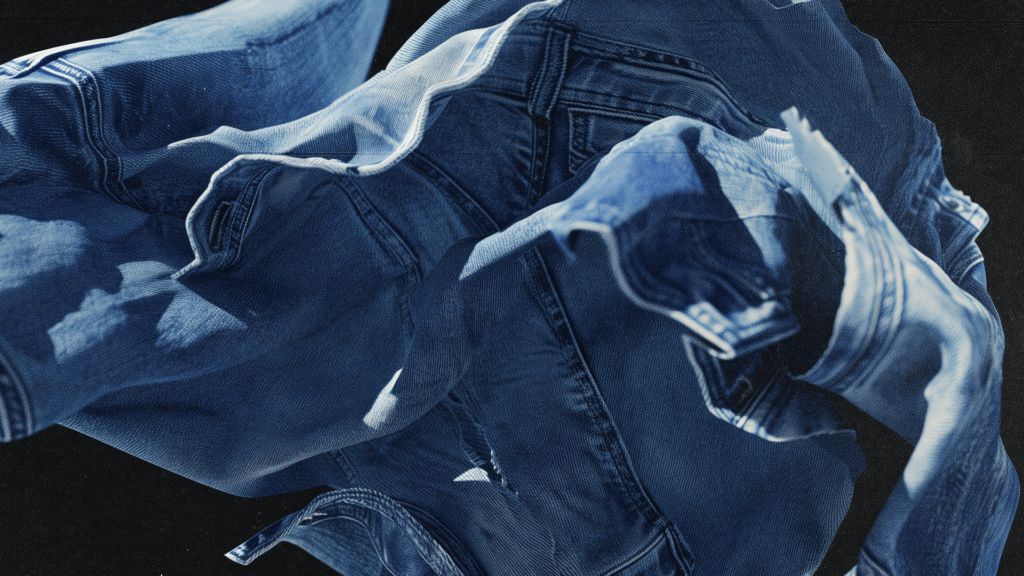
blue r/evolution is a landscape where installation, garments and related objects, situated in an exhibition context of cutting-edge design, reveal how material and color can encode complex societal shifts. The exhibition celebrates the cultural evolution and significance of blue and its connection to denim, as a symbol of the working class, material of expression for subcultures and its iconic status in global fashion.
More than an archive, this is an invitation to reimagine clothing as a dynamic form of personal and collective narrative, challenging viewers to see beyond the surface of what we wear.

Denim embodies a living paradox: simultaneously elite and accessible, traditional yet revolutionary, local and global. Its continuous evolution stands as a testament to the fluid boundaries of our society. Every thread, every shade of indigo, carries a powerful message: clothing is never just clothing. It's a mirror, a manifesto, a revolution.
Exhibition
150 Years of Denim and Workwear
Roy Roger's
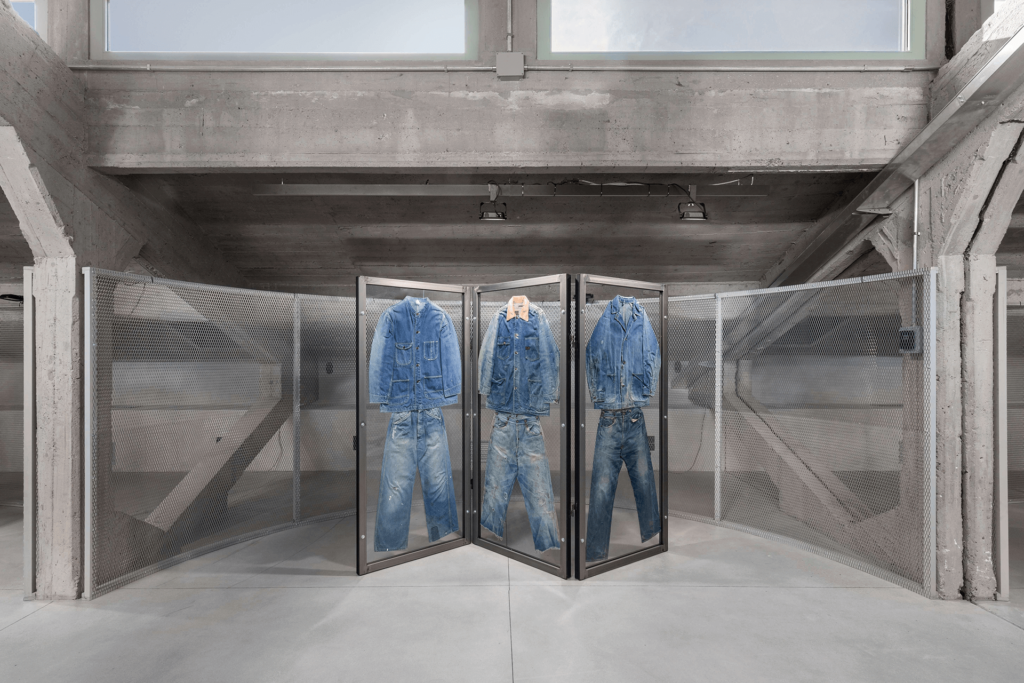
From the private archive of Roy Roger’s comes a selection of work garments that trace 150 years of denim history. Shades of blue, rips, stains, and signs of wear tell the stories of those who wore them, preserving narratives embedded in these lived-in pieces. From American miners’ overalls to railway workers’ trousers, from prison jackets to military parkas, they all share one common element: the identity of the person who wore them.
This journey explores fashion not through iconic runway pieces but through the emotion carried by garments that have lived everyday life. Authentic objects, from the late 19th century to today, transcend time and space, intertwining with people’s lives, far removed from the glamour of the catwalks.
These pieces represent an awareness of “being” versus just “appearing”, evoking fashion as a key through which to express identity and belonging, not ostentation.
Founded in Campi Bisenzio, Tuscany, in 1952, Roy Roger’s is Italy’s first denim producer. Its archive, curated by Guido Biondi, the brand’s creative director, houses over 6,000 pieces: from historic denim, workwear, and military garments that showcase the early uses of denim and the craftsmanship that made them unique, to modern reinterpretations celebrating denim’s role in contemporary design.
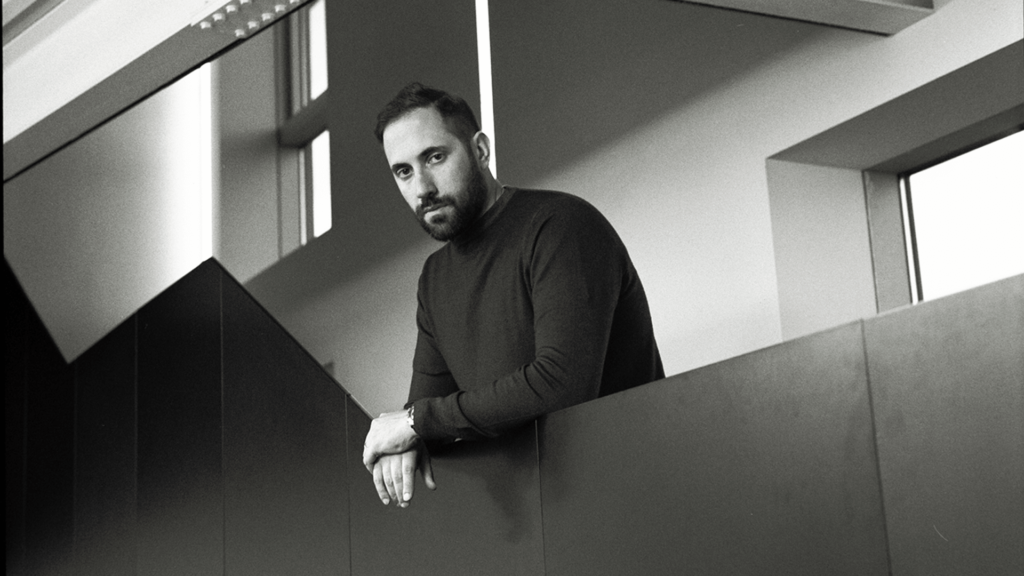
About Roy Roger’s
Roy Roger’s is the first blue-jeans in American denim designed and made in Italy. Eclectic, functional, versatile, resistant, practical and durable.
1952. The American dream arrives in Italy with Roy Roger’s. That dream happened more than 70 years ago. Back then, young Francesco, the founder of the brand, entered into a partnership with Cone Mills Corporation of New York, one of the largest suppliers of denim made in the USA. Also the name of the brand takes inspiration from the USA: Roy Roger’s was an American tailor who made overalls for California farmers at the end of the nineteenth century. The values of honor, tradition, and respect still influence the new collections.
Today, Roy Roger’s Jeans are the result of a constant search for top quality materials and ongoing experimentation with innovative washes, craftsmanship and cutting-edge technology. Above all, they come from an ability to reinvent historic styles, creating new ways of wearing and enjoying blue jeans.
Zurashi / Slipped
Rowland and Chinami Ricketts
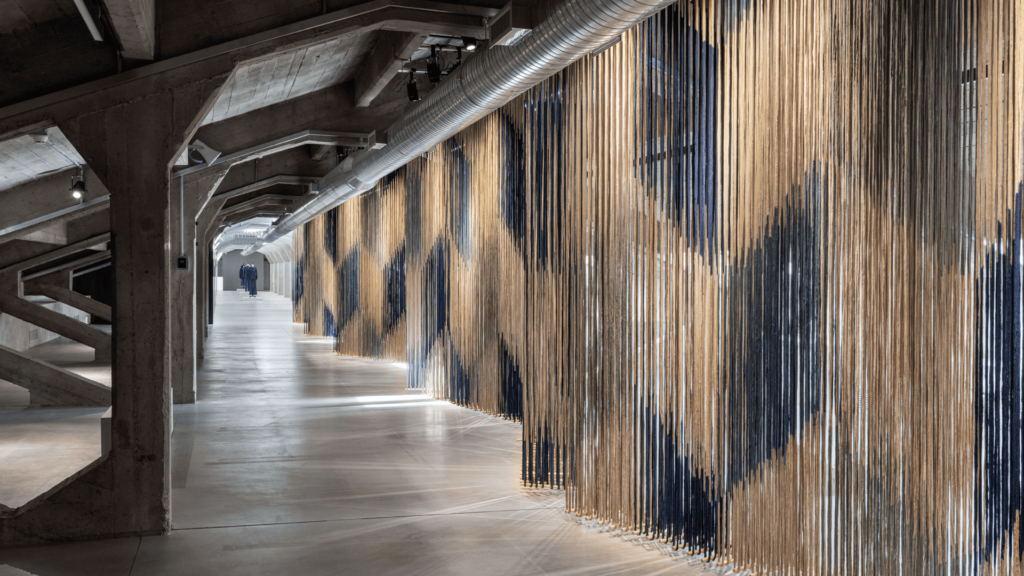
Like any other creative process, the production of cloth, and ikat in particular, creates a framework of limitations for the artist to work with. The yarns must be organized and handled to prepare them for weaving. Before dyeing, certain sections of the yarns are bound to resist the dye, creating patterns by preventing color absorption in those areas. When interwoven, the dyed and resisted sections become whole in the patterns that are revealed. These patterns reflect a deep understanding of ikat’s limitations as well as their creator’s ability to trick them into doing what they want.
Zurashi, the title of this work, is a common ikat technique in which the yarn bundles are “slipped” before binding to create stepped or opposing patterns. Instead of the final result ending in woven cloth, the artists developed a design that cast a pattern across the suspended warp yarn, capturing the process of how they hang yarns and cloth to dry in the studio after dyeing as well as being reminiscent of the yarns being compressed on the loom and transformed into cloth in the weaving process.
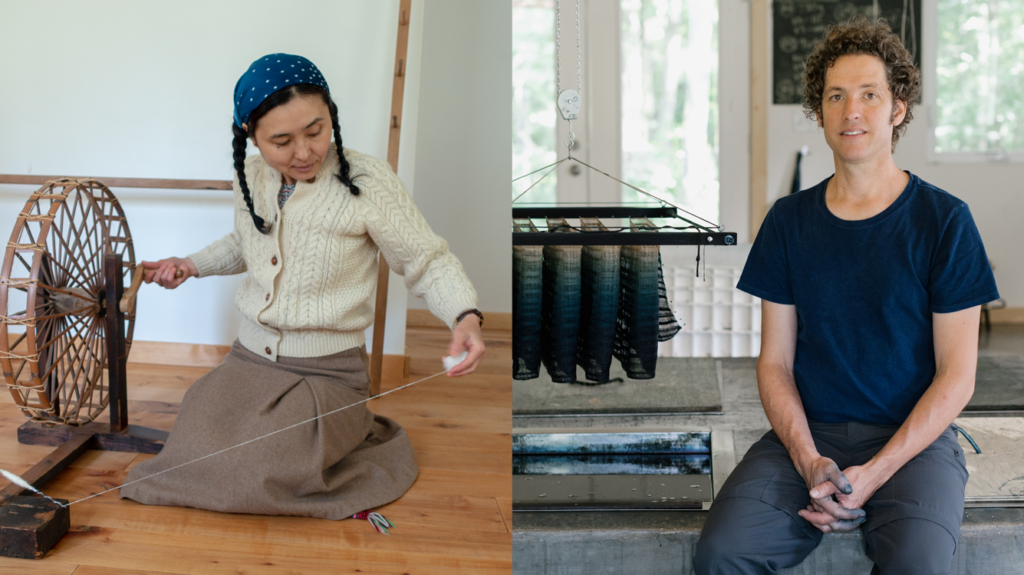
About Rowland Ricketts
Rowland Ricketts utilizes natural dyes and historical processes to create contemporary textiles that span art and design. Trained in indigo farming and dyeing in Japan, Ricketts received his MFA from Cranbrook Academy of Art and is currently a Provost Professor in Indiana University’s Eskenazi School of Art, Architecture + Design. His work has been exhibited at the Textile Museum in Washington, DC, the Museum of Fine Arts Boston, the Seattle Art Museum, and the Smithsonian American Art Museum Renwick Gallery. Ricketts is a recipient of a United States Artists Fellowship and a Smithsonian Artist Research Fellowship.
About Chinami Ricketts
Chinami is a weaver who crafts traditional narrow-width yardage for kimono and obi using historical kasuri (ikat) techniques. After studying indigo dyeing in her native Tokushima, the center of indigo cultivation and processing in Japan, Chinami apprenticed with Yumie Aoto, learning the kasuri and weaving techniques that form the foundation of her work today.
Bleus de travail
Charles Fréger
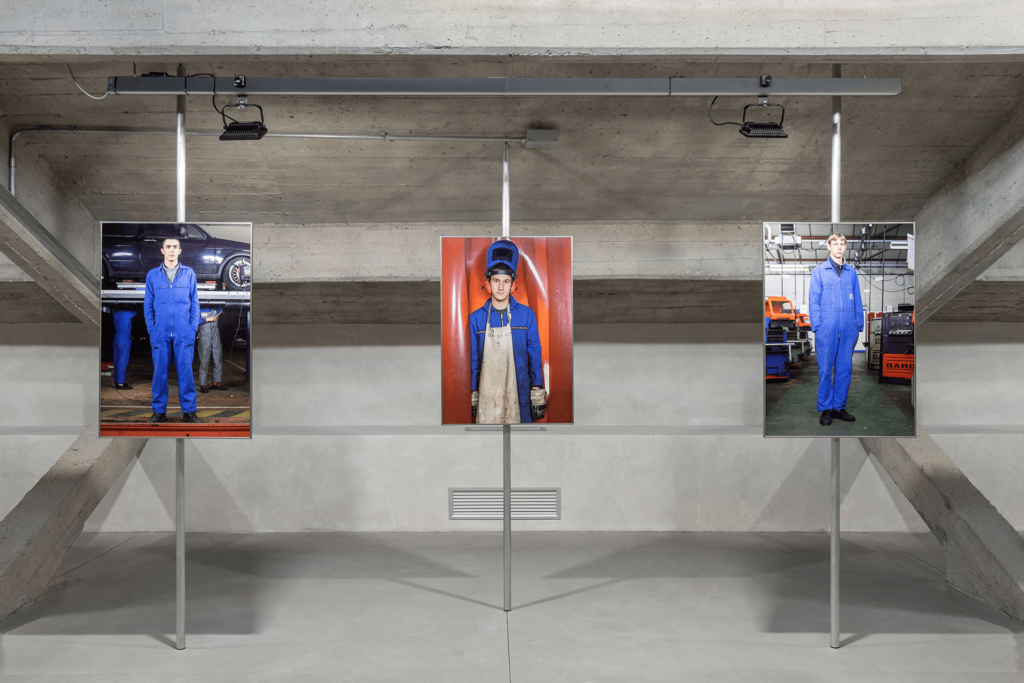
Bleus de travail (2002–2003) explores vocational training environments as part of a broader collection of student portraits taken across several technical schools. The series is divided into subsets: student welders, boilermakers, industrial maintenance technicians, mechanics, agricultural mechanics, paper industry technicians, horticulturists, farmers, florists, roofers, carpenters, joiners, cabinetmakers, masons, plumbers, painters, stonemasons, bakers and pastry chefs, and finally butchers. It serves as a true catalog of workwear, photographed in training spaces. From attire to surroundings, everything is designed to protect inexperienced trainees as they learn their trade.
The first thing that emerges from the series is an inventory of work clothes, taken in the context of learning environments. Even in this controlled environment where nothing is meant to deviate from the norm, individuality manages to break through and disrupt order. A rolled up jumpsuit, sleeves tied at the waist, red handprints on a white apron and often youthful touches like gelled hair, caps and piercings emerge with varying degrees of boldness. The photographer, with a few rare exceptions, asks the students to set aside their tools and pose facing the camera, arms by their sides. The gesture they are there to master, the very act of working, is absent. The aim is not to depict the laborer in action, but to focus on individuals, caught between the conventions of social posing and the remnants of adolescence. They confront the camera with a gaze that seems to probe its lens, as if seeking in it the reflection of their future image, the photograph of their adult identity.
The Bleus de travail series was produced with the support of the Caisse des Dépôts et Consignations, in partnership with the Centre photographique de Haute Normandie
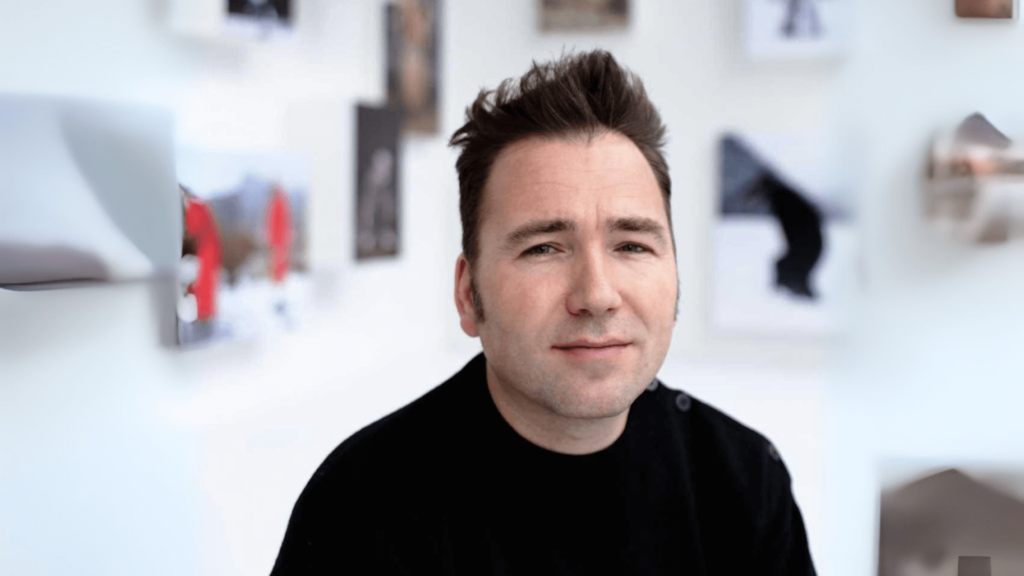
About Charles Fréger
Charles Fréger (b. 1975) has been building a vast photographic portfolio since 1999, consistently focusing on human subjects and their various social identities. His subjects appear in diverse forms: wearing uniforms, adorned with tiger face paint, or dressed in moss suits, often captured in states of transformation between human, animal, or plant forms. These transformative states embody natural cycles and beliefs while highlighting deep communal connections.
Developed over multiple years, his projects culminate in books where photographs are accompanied by writers’ essays and researchers’ notes. This format allows for storytelling that documents how humans create relationships with their surroundings and, more broadly, with the living world.
In recent years, Fréger has exhibited at the Musée d’histoire de Nantes, the Musée des confluences (Lyon), the Musée Armani/silos (Milan), and the Rencontres d’Arles. His numerous monographs have been translated into several languages. His latest book, ‘Aam Aastha,’ exploring divine incarnations in India, was published in 2023.
Research tables
Polimoda Library
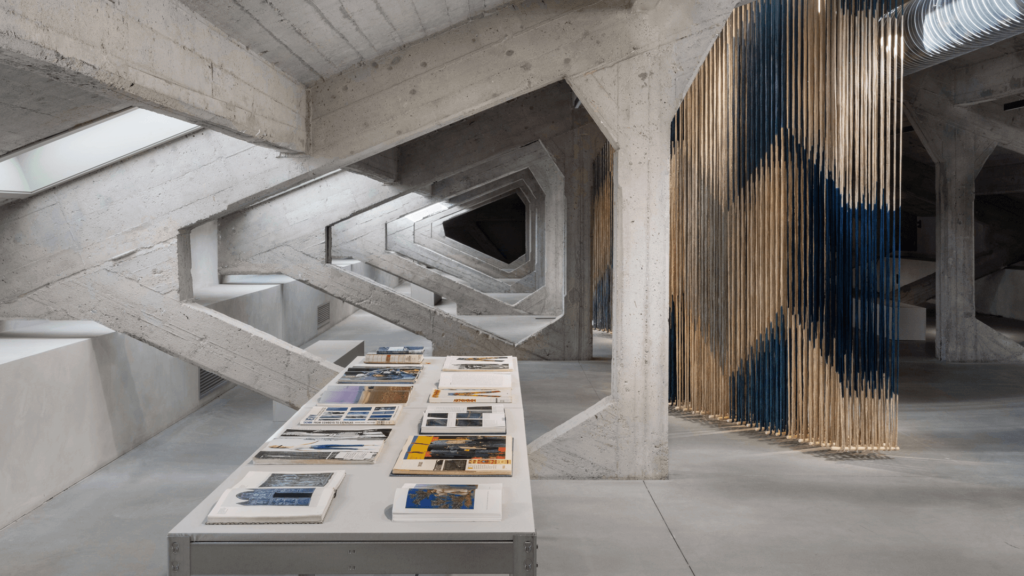
The Polimoda Library presents a curated selection of books, publications, and research materials to explore the key themes of the exhibition: blue, denim, workwear, subcultures, textile art, and photography. This collection, designed to spark curiosity and deeper understanding, offers visitors the chance to uncover unexpected connections between aesthetics, history, and innovation. The selected texts are available for on-site consultation, providing a valuable resource for enthusiasts, students, and creatives seeking inspiration.
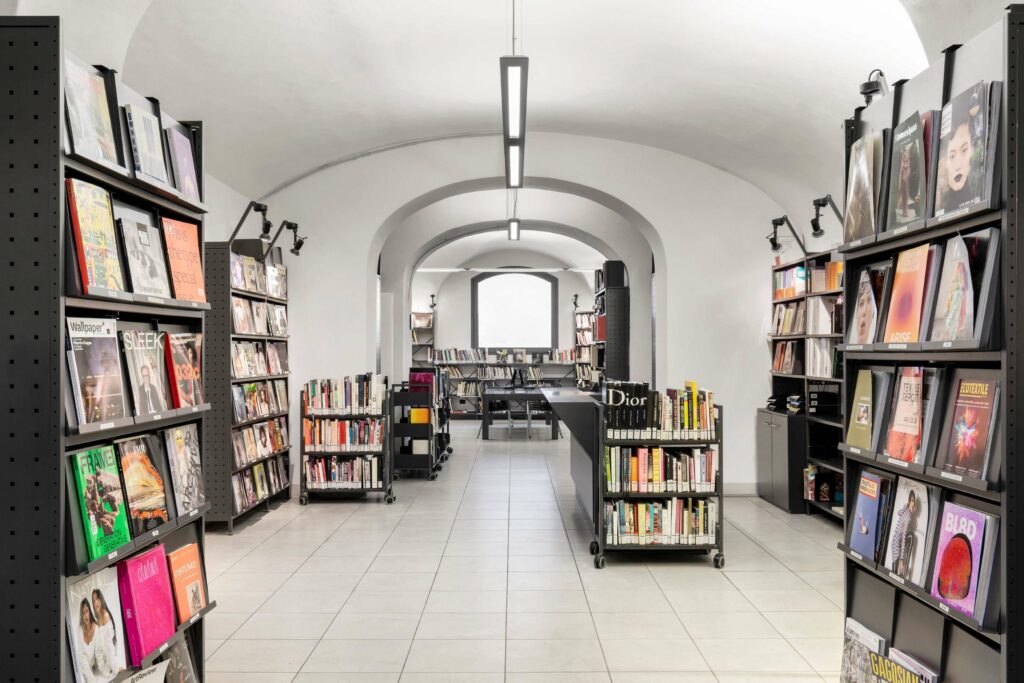
About Polimoda Library
Nestled within Villa Campus in Florence, the Polimoda Library – Centro di Documentazione Matteo Lanzoni stands among Europe’s largest and most influential fashion libraries. Since its founding in 1986, it has evolved into a dynamic hub of industry knowledge, now offering over 29,000 volumes that span fashion history, design, textile technology, marketing, and economics. Along with books, the library’s collection encompasses fashion magazines, look-books, film resources, and online materials—all curated to meet the diverse interests of students, professionals, and researchers alike.
Within its four distinctive areas, visitors can immerse themselves in textiles and clothing, delve into various art forms and expressions, uncover the potent influence of photography, and harness the power of innovation management to fuel creativity. By blending archival depth with forward-thinking resources, the Polimoda Library continues to inspire and inform the next generation of fashion minds.
Talks
The second edition of AN/ARCHIVE involves a rich program of live conversations and panel discussions to foster dialogue and discovery around its key themes, featuring guests, experts, and researchers from fashion fields and beyond. The program is designed to explore topics on blue, denim, and workwear, while simultaneously examining broader sociological and anthropological phenomena, highlighting fashion’s profound influence and permeation of society as a whole.
Through these carefully orchestrated discussions, AN/ARCHIVE seeks to unravel the complex narrative threads that connect fabric, culture, and social transformation, offering participants an insight into the deeper meanings embedded within everyday garments.
Body of Light
A Lecture by Angelo Figus
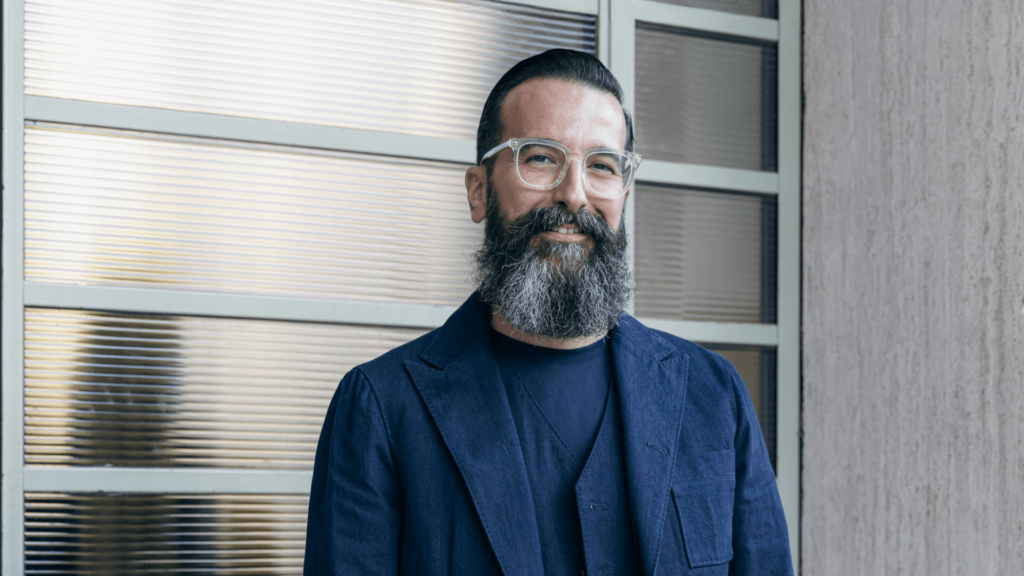
The second will feature Angelo Figus, renowned Creative Director and Trend and Color Forecaster.
In his lecture, Body of Light, Figus will talk about Pitti Filati’s Spazio Ricerca theme and the role of blue in SS 2026 trends and color.
Blue. A universal language
A Conversation with Satoshi Kuwata
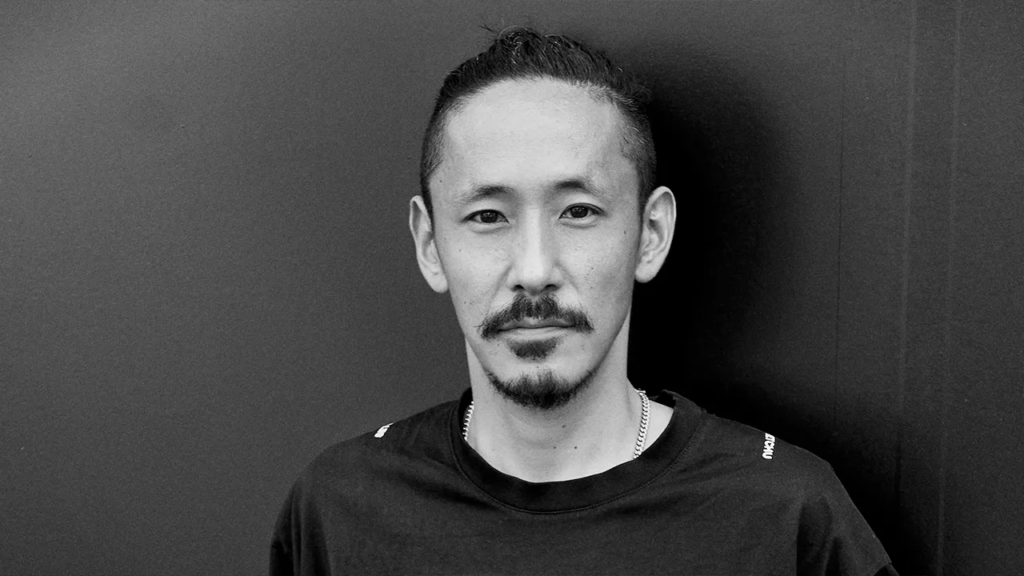
The first talk will feature a distinguished guest, Satoshi Kuwata, founder and creative director of SETCHU, winner of the prestigious 2023 LVMH Prize, and guest designer at Pitti Uomo 107.
In conversation with Jay McCauley Bowstead, Senior Lecturer at the London College of Fashion (UAL), the talk will explore the role of blue and denim in SETCHU’s collections, tracing the designer’s journey from Kyoto to Milan, and examining the influence of cultural exchange on his aesthetic.
From Aizome dyeing to boro textiles and selvedge denim, indigo is a shade deeply intertwined with Japanese culture. In a brand that transcends the binaries of East and West, masculine and feminine, tailoring and casualwear, how does blue signify something both transcendent and universal
About Satoshi Kuwata
Satoshi Kuwata has extensively traveled Japan and the world, gathering unique know-how on many different visual traditions. Having lived in Kyoto, Paris, Milan, London, and New York, he developed a unique approach to chic, permeated with a profound knowledge and respect for different cultures and kinds of craftsmanship in all their shapes and forms. He is the perfect embodiment of SETCHU’s style philosophy: dressing with substantial doses of refinement whatever the context. His taste has been sharpened by years at both the helm of international design studios and in his roles as a creative director. A career that saw him working with Givenchy, Edun, Kanye West, and Gareth Pugh – while developing an eye for sharp tailoring at institutions like H. Huntsman and Sons on Savile Row in London. A fishing enthusiast, he will dress with the same spirit whether in a studio in Milan or when fishing in Gabon. Satoshi Kuwata is the recipient of the 2023 LVMH Prize. In 2024 he collaborated with Davies & Son to create a bespoke collection, presented in Venice during the opening of the Art Biennale.
As of today, SETCHU presents its collections during Milan Men’s Fashion Week.
Social media
Follow the hashtag #PolimodaAnarchive to stay connected with the event and join the global conversation.
Colophon
Curation
Massimiliano Giornetti
Archive garments
Roy Roger’s
Textile Art Installation
Rowland & Chinami Ricketts
Photography
Charles Fréger
Exhibition design
(AB)NORMAL
Acknowledgments
Marialisa Cornacchia
AN/ARCHIVE is a space for fashion research and studies by Massimiliano Giornetti and Linda Loppa.
Contact
blue r/evolution is a component of the AN/ARCHIVE project, dedicated to advancing the study and appreciation of fashion as a cultural and artistic expression.
For those interested in learning more about our initiatives, participating in upcoming events, or exploring potential collaborations, detailed contact information and additional resources are available, please visit the AN/ARCHIVE page.
Cover image credits: Bleus de travail by Charles Fréger